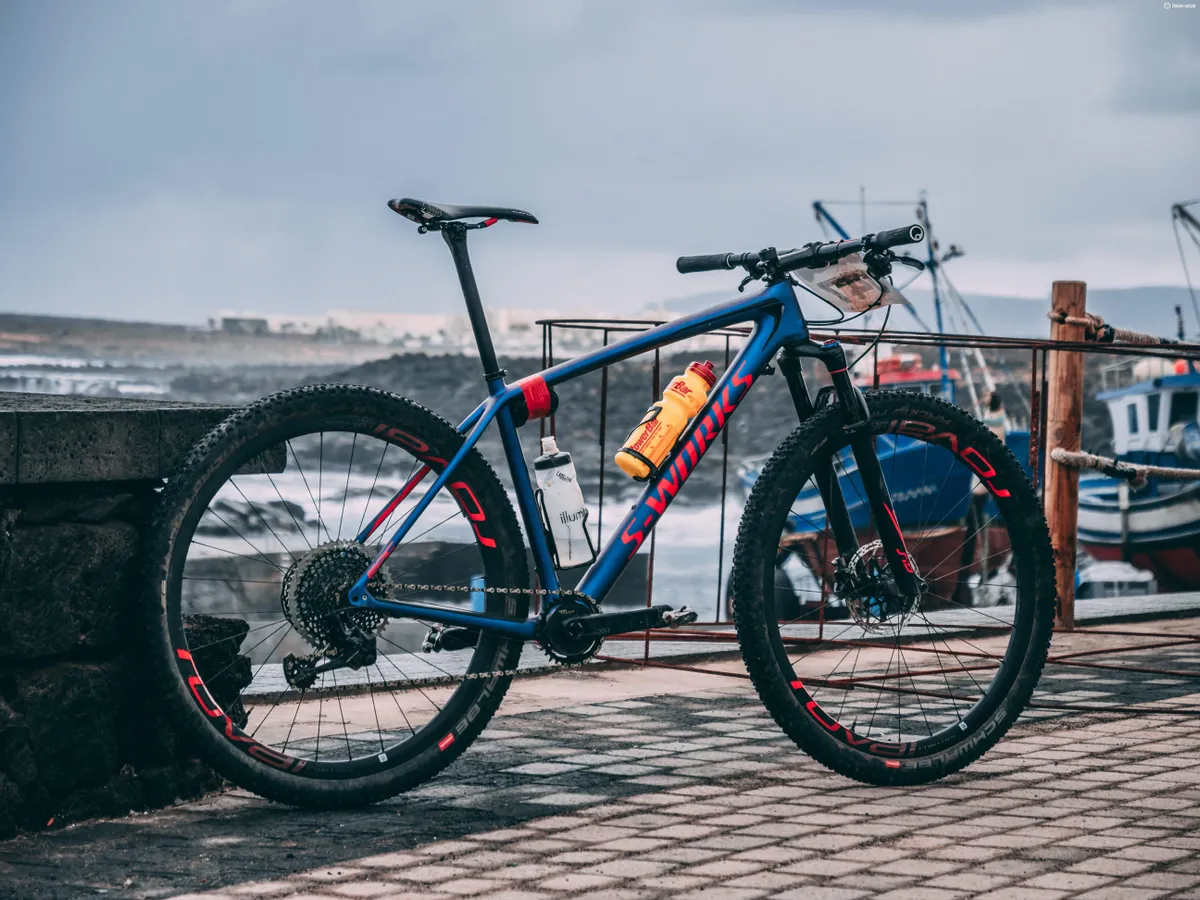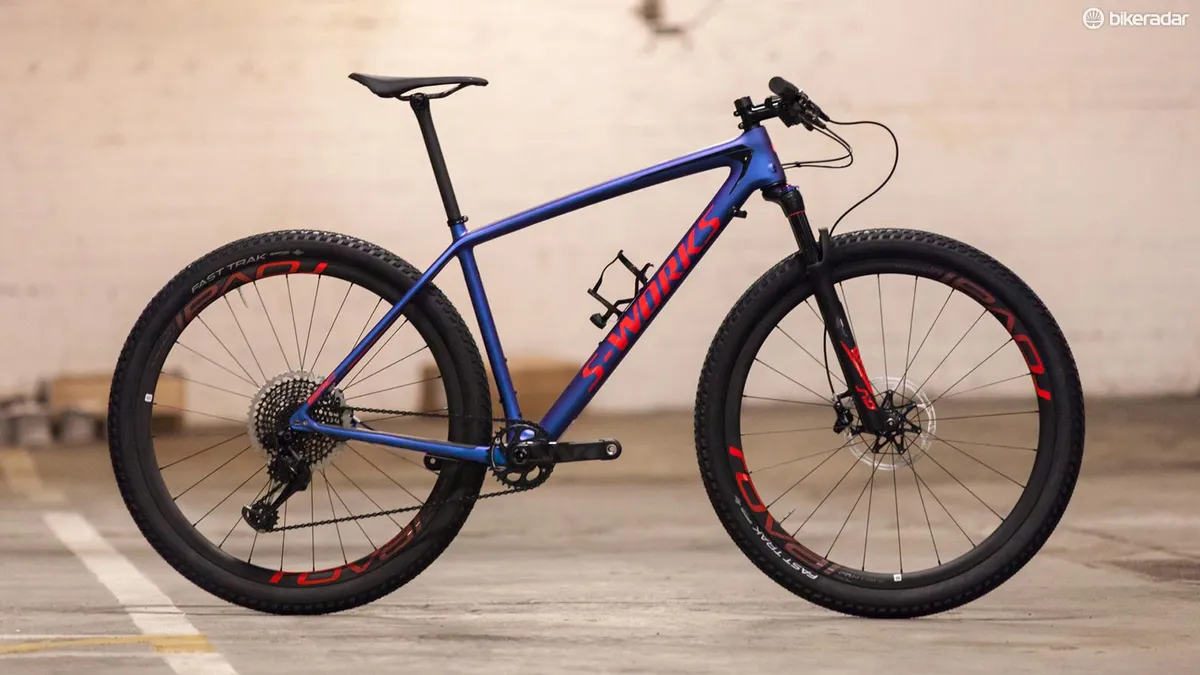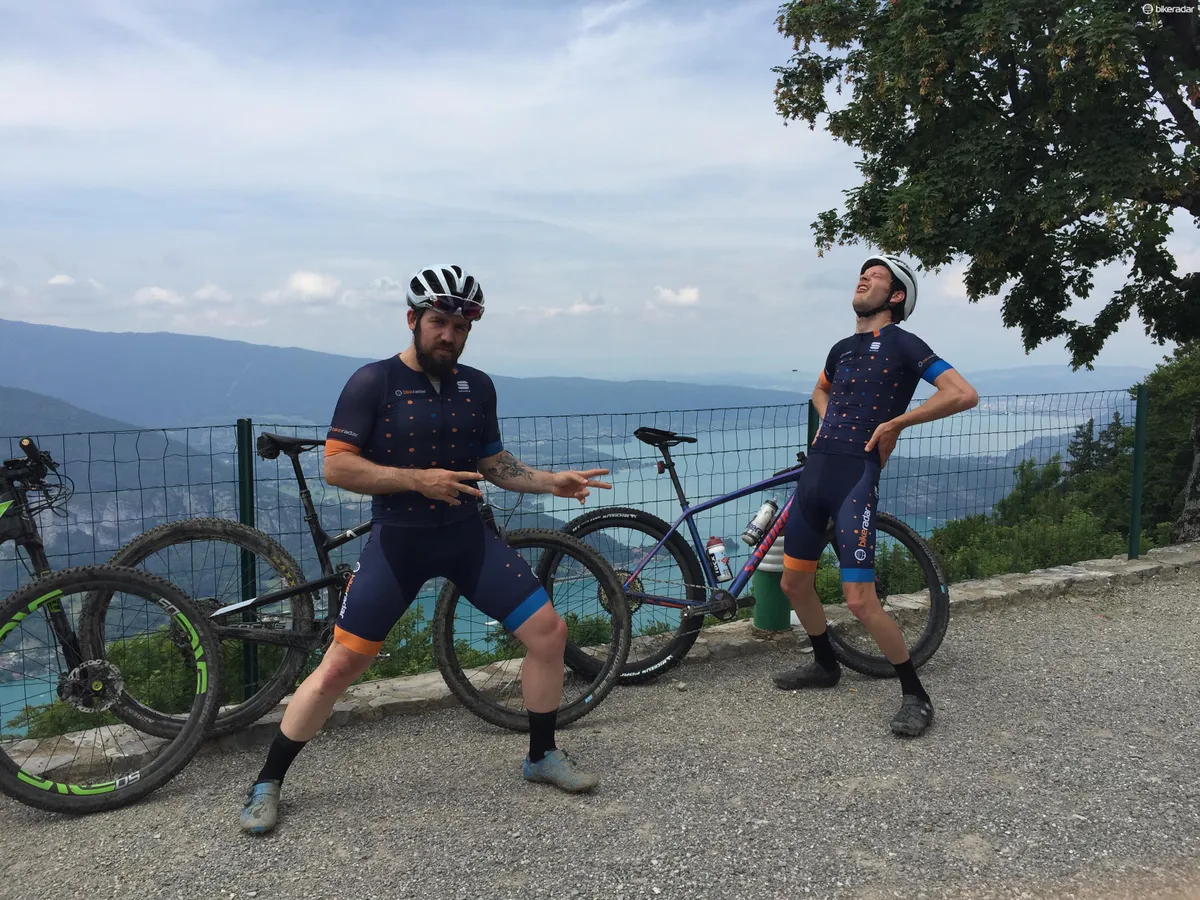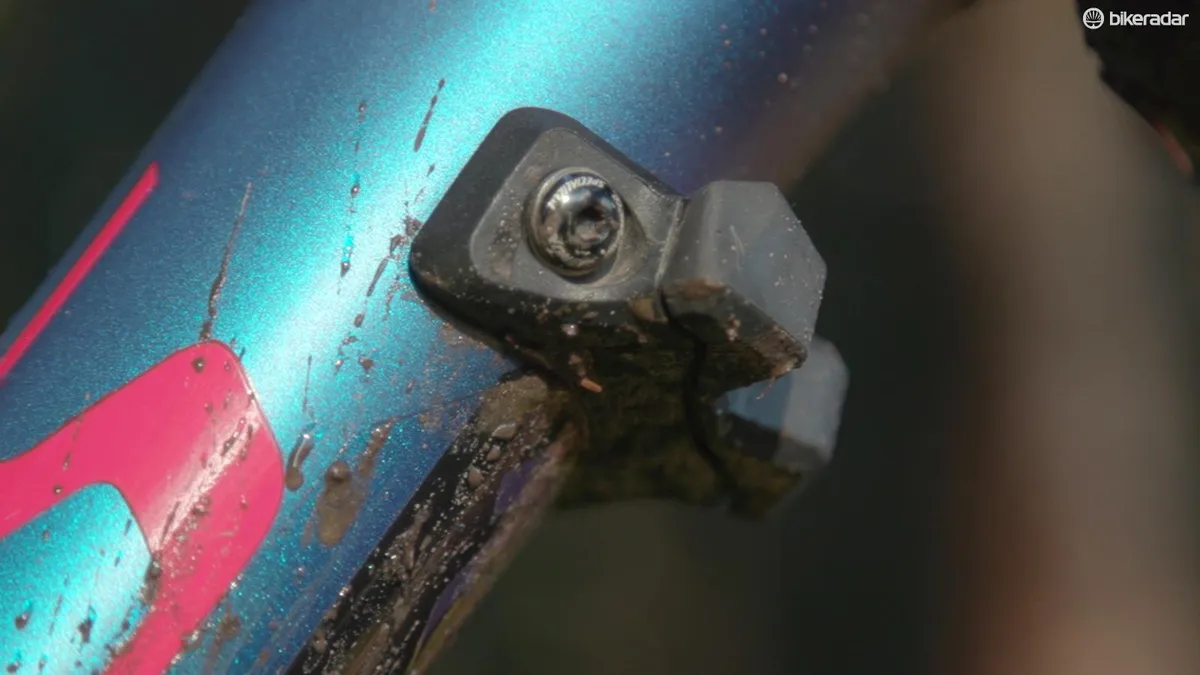The race season is well and truly underway, and after six months of hard riding I felt it was time for an update on my long term Specialized S-Works Epic hardtail.
I’ll go over the changes I’ve made and how I’ve got on in racing and training with the bike, and you can read my original review underneath.
The changes
As I mentioned in my video review below, while the Epic is insanely light and fast, there were a few component choices I wasn’t so happy with, in particular the crotch smashingly firm saddle and the Specialized Fast Track tyres. Neither were that great when it came to comfort or grip, two things any racer values highly.
The tyres were changed to 2.25 Schwalbe Racing Ralph Snakeskins in their new Addix compound. They’re a classic XC race tyre and you won’t have to look far on a start line to see them being used.
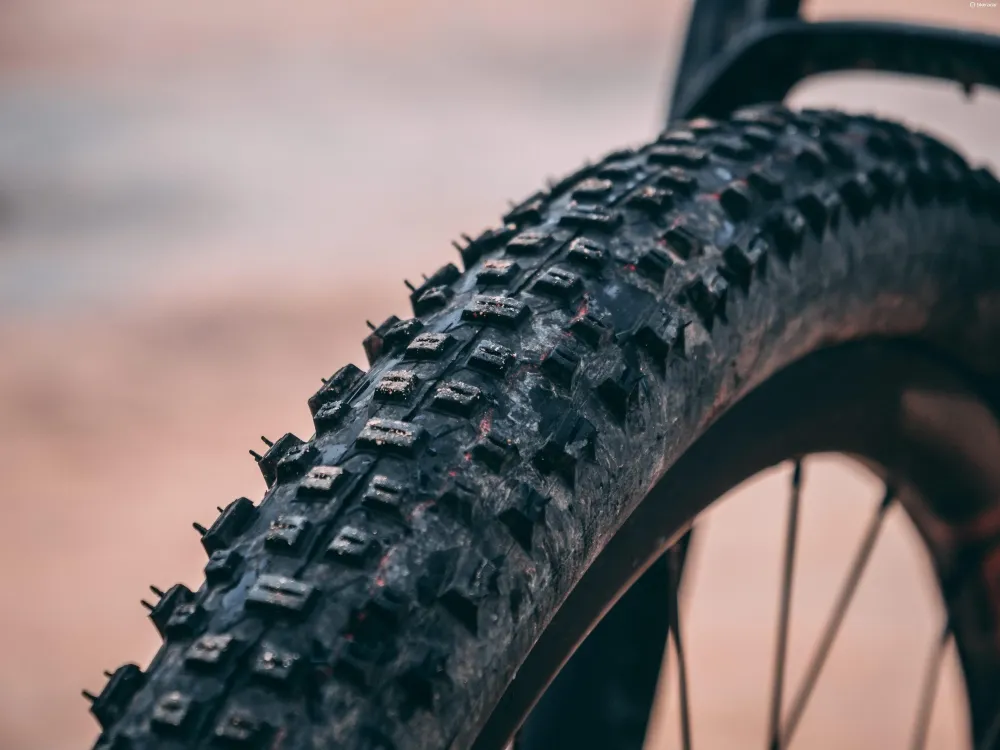
To be brutally honest I don’t think I can feel any difference between the old compound and the new Addix compound, so as long as you don’t mind not having the ‘cool’ red strip down your tyres I suspect there are bargains to be had on the older variety.
The tougher Snakeskin sidewalls means they are on the heavy side for XC, but I’d choose reliability over weight every time.
The saddle has been changed to an equally light, but far narrower and more forgiving Prologo Nago C3 CPC. Being full carbon, it doesn’t come cheap, but I’ve had no issues with it and my nether regions have enjoyed the extra give/compliance on offer.
Although it’s by no means a plush saddle, and still sits on the firm end of the spectrum, it's less firm than the rock solid Specialized model that came with the bike. The nano grip on the top of the saddle is fine, but once again I’m not sure if it makes any real difference to how I ride.
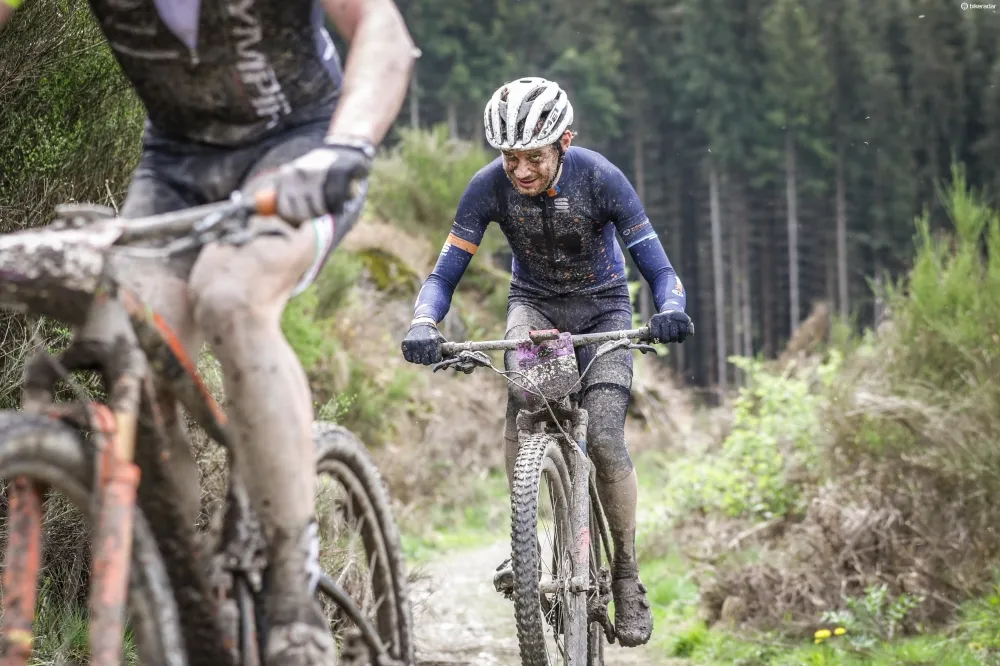
Being a keen racer and wanting to track my performance and training I’m always eager to have a power meter on my bike. In early January, SRM sent me one of its SRAM XX1 spiders and a PC8 computer — very high-end and very bling.
The computer has been flawless, but the power meter’s zero-offset began to wildly over read after around two months of riding, meaning it needs to go back to SRM. This process is ongoing so I’ll let you know what the verdict is later on in the year.
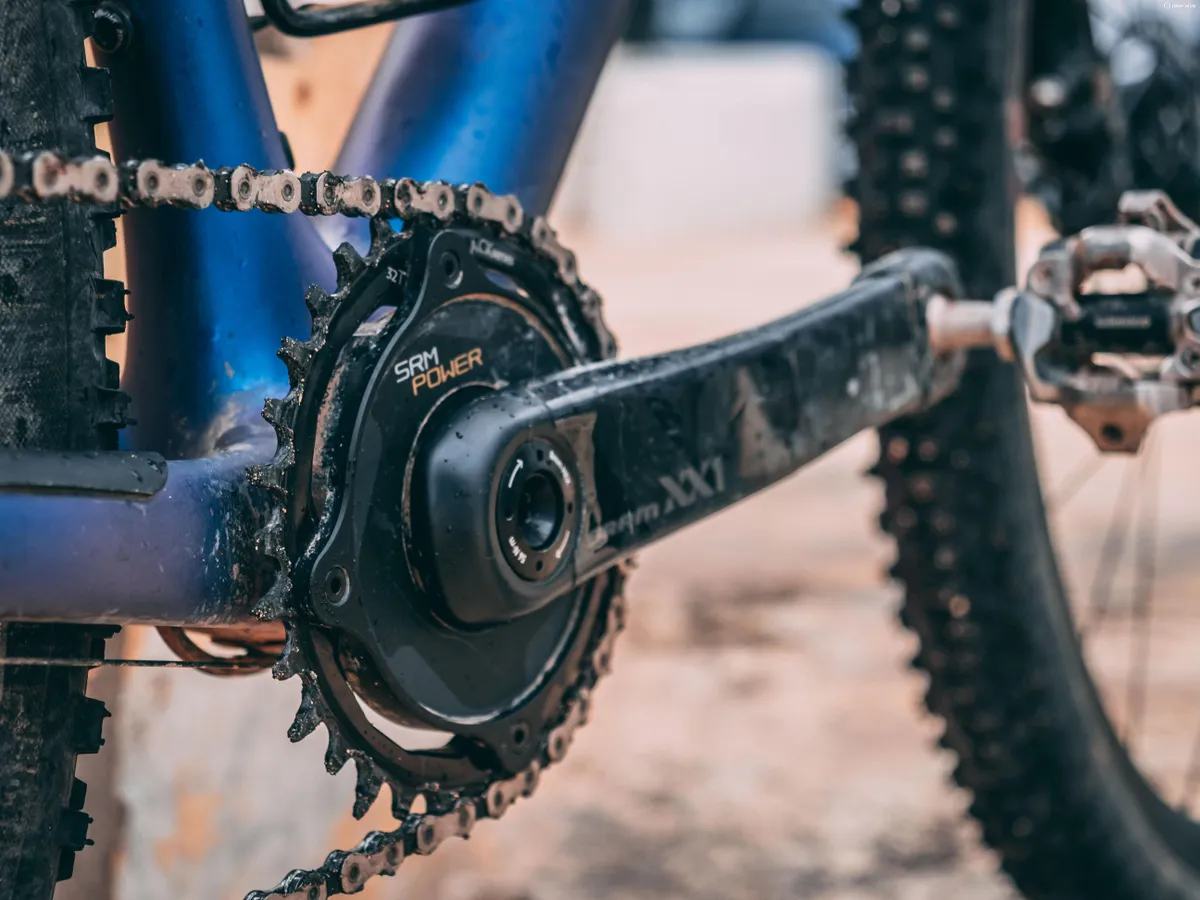
Serendipitously, Rotor emailed me about its new 2INPower MTB power meter the same week that the SRM started playing up, so I had a replacement almost immediately. The 2INPower differs as it’s a true left leg/right power measurement, and uses Rotor’s fancy Q-rings.
So far, the 2INpower has proved to be accurate and consistent, no matter how much abuse in the cold, wet and mud I’ve put it through. It’s also reliably informed me that my left leg is 2.5 percent stronger than my right. What I do with the information? Who knows, but it’s an interesting point of data none the less.
The Q-rings have really impressed since I put them on in early April. Rotor claims they can reduce lactic acid production, thus making you faster, and while I’m not so sure about this, I can definitely say they’ve helped to smooth out my pedal stroke on technical/loose climbs. I’ll be doing a more detailed review on the 2INPower soon, so keep your eyes peeled.
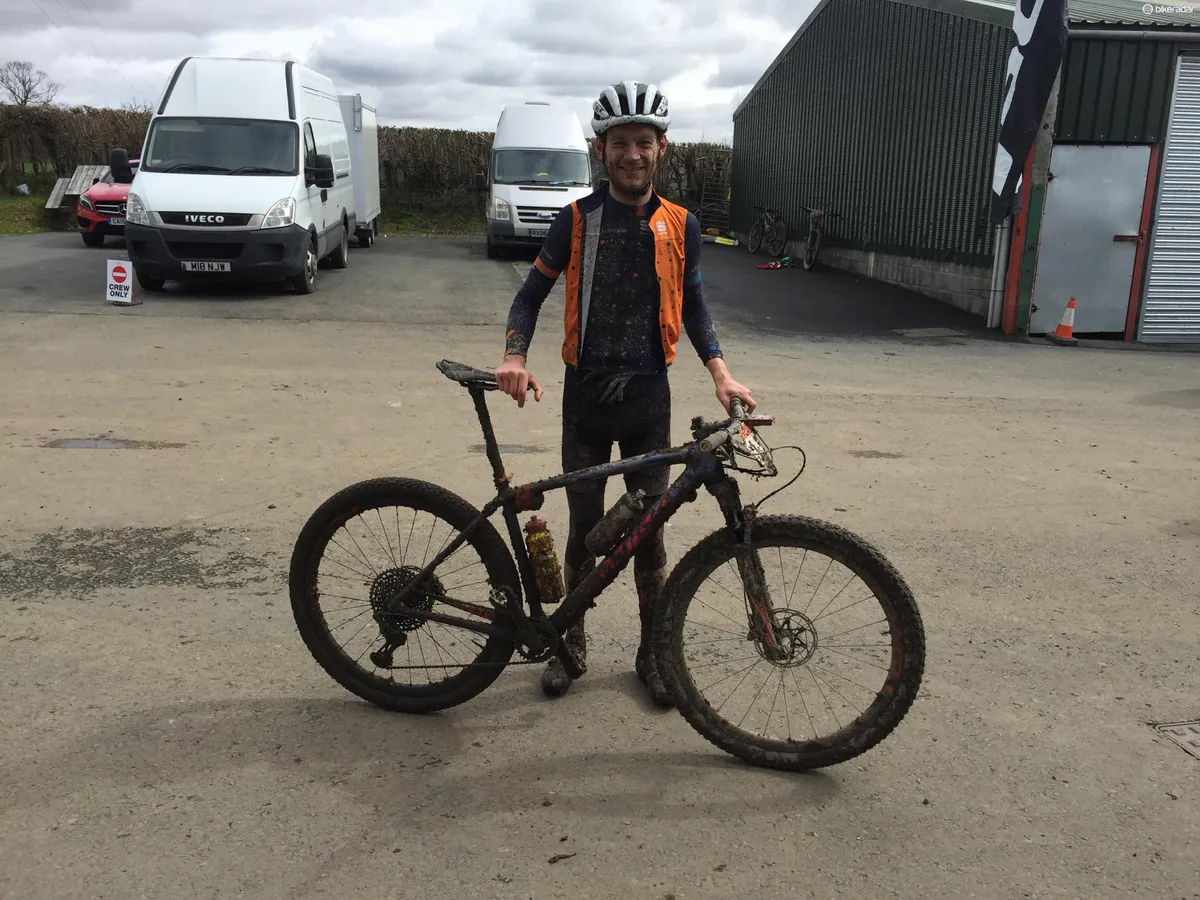
Some small issues
A bike is rarely perfect and I’ve had a couple of minor issues with the Epic. I like the simplicity of the single bolt S-Works seatpost, however the saddle had a tendency to tilt downwards during a hard impact, no matter how hard I tightened it.
This happened in a couple of races and was mildly frustrating, because a small change in the saddle tilt also adjusts the overall height, which throws me off kilter when pedalling.
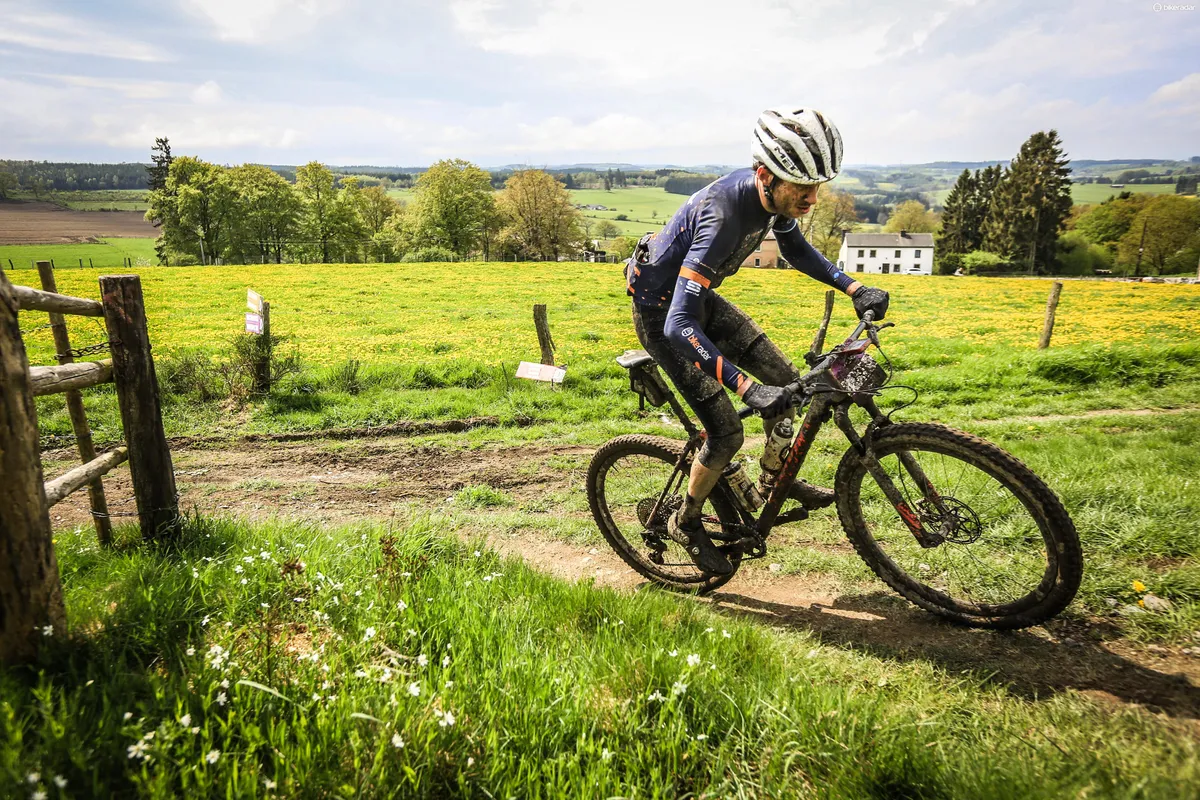
Thankfully there was quick fix, just taking the seatpost guts apart and filling them with carbon paste to provide some extra grip. Since then, no issues, but it’s worth bearing in mind if you have a similar seatpost to what comes on the Epic.
7 months in, where do we stand?
After six months riding the bike nearly every day, the Epic is starting to show signs of the abuse I've put it through. There are plenty of scratches on the frame and that beautiful paintwork has lost some of its shine.
This is especially noticeable on the top tube, where my knees have rubbed the frame during muddy rides. That being said, all of this is purely cosmetic and I kind of like that used and abused look of a well-loved bike.
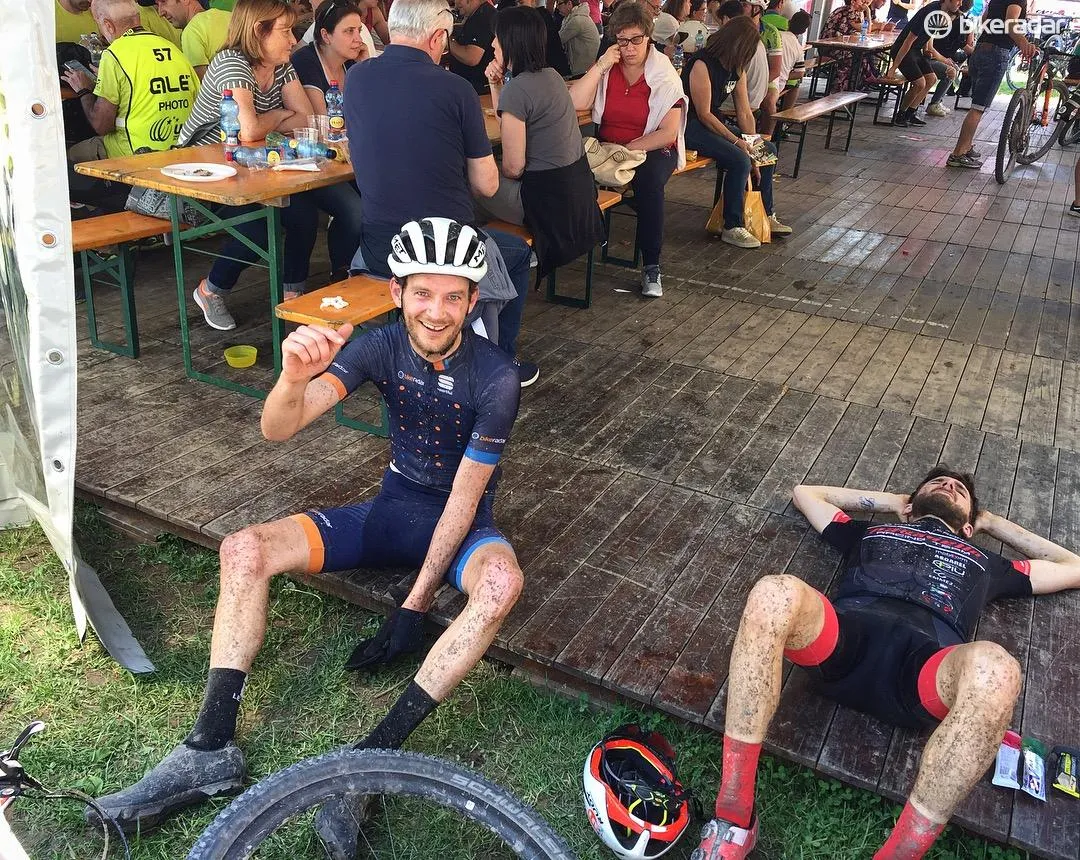
I’ve only serviced the fork once, because the lowers had plenty of play in them, and since then they run nice and smooth. Having used the Brain equipped Sid fork for a while now, I don’t think it feels quite as plush as its competitor, the Fox 32 Stepcast. However, the wider crown does make the fork feel stiffer, so as with any product there’s a compromise to be had when deciding which is best for you.
I have a few more events planned before the end of the season, so keep an eye on BikeRadar to see how I get one. One thing is for sure, the Epic is still a seriously impressive race bike and I’ll be keen to make the most of it before it has to go back home to Specialized.

Original post from 10 April 2018
For the 2017 season I rode a Cannondale Scalpel Team. It was a brilliant bike, especially when things edged towards the gnarlier end of the cross country spectrum.
However, in hilly marathon races I felt like a lightweight hardtail would have been a better option, and with marathons being a big focus of my 2018 season that’s exactly what I went looking for. Step in the Specialized S-Works Epic HT.
This all new Epic hardtail comes from the mind of ex-Cannondale engineer and carbon fibre wiz Peter Denk and was designed to be as light as possible without sacrificing strength or stiffness.
Being 183cm tall I went for a size large, which weighed a scant 8.7kg without pedals. Add on some Shimano XT pedals and you’re looking at a ready to race 9kg bike.
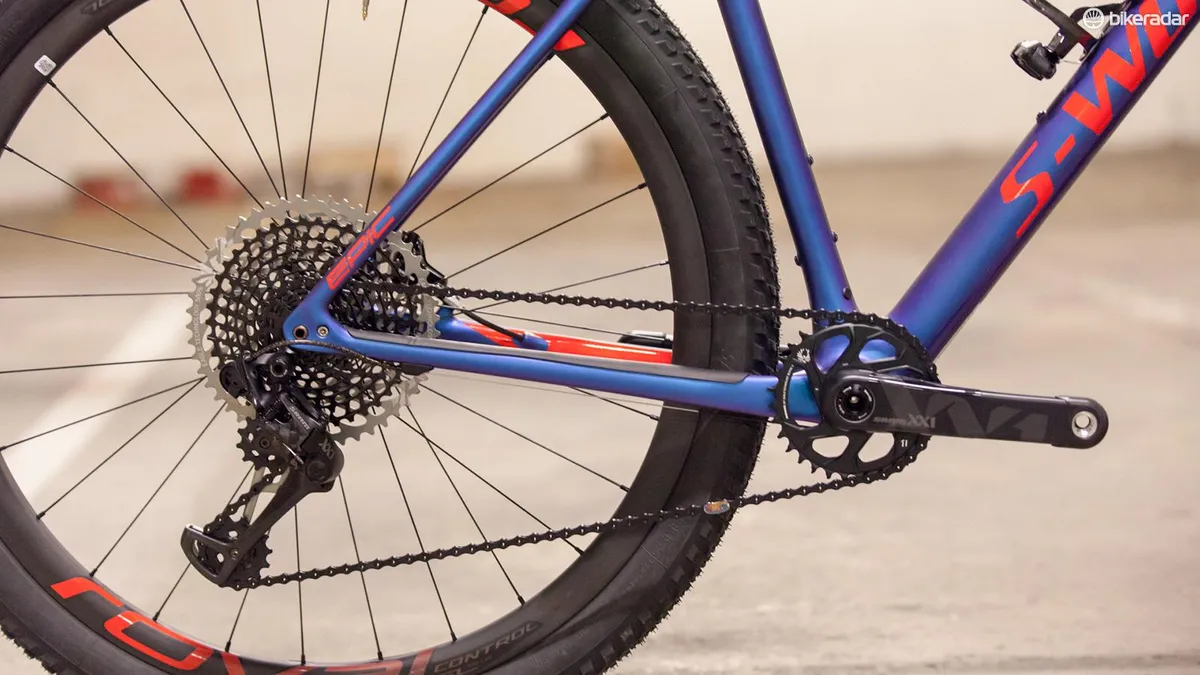
There are slightly lighter bikes out there, such as the Merida Big Nine, but I felt the engineering wizardry that’s gone into the Epic overshadowed the small weight penalty. More on that later.
Before I get into how it rides, a quick run down of the spec.
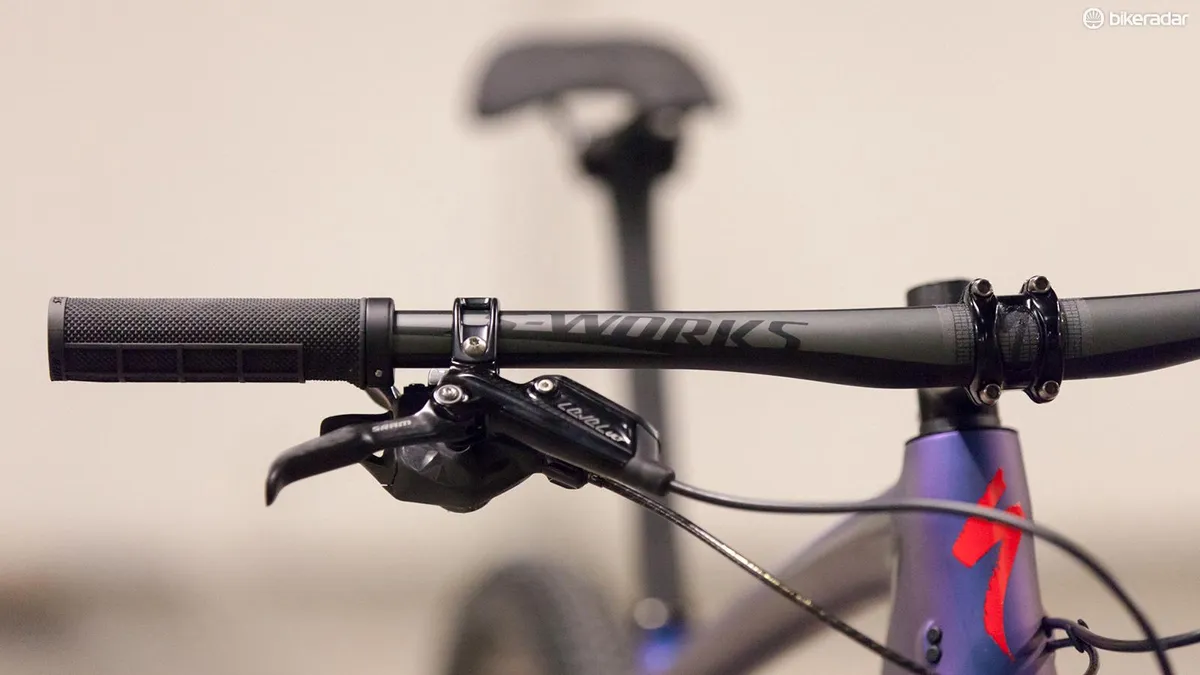
This is the S-Works model, which means it’s a no holds barred top spec. SRAM Eagle groupset, SRAM Level ULT brakes, Roval carbon wheels and a nearly all-carbon finishing kit. You also get a RockShox SID with Specialized’s patent Brain lockout technology.
The Epic also features a neat rubber stopper at the top of the down tube, which prevents your fork crown from trashing said top tube in the event of a crash. Some people think it’s hideous, and perhaps Canyon’s headset based solution is a little tidier, but as long as it keeps the frame intact, I’m not too fussed.
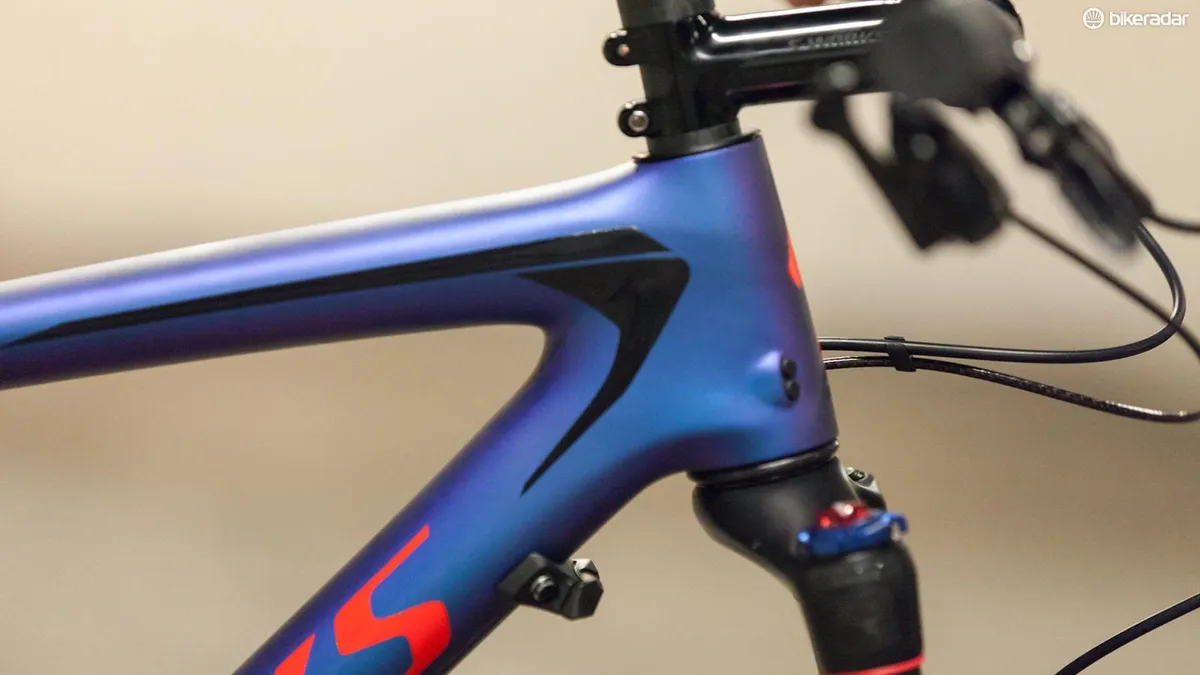
Tweaked geometry
Compared to its previous top-spec hardtail, Specialized has also tweaked the geometry to match the trends in current XC bikes, and if you’re familiar with BikeRadar mountain bike reviews you probably know exactly what comes next.
With courses getting gnarlier every year, Specialized has made the bike a touch longer and slacker to help deal with those demands. Old XC bikes were known for being twitchy and unforgiving in their handling, and while the Epic is no downhill bike, the geometry certainly sits on the more trail friendly side of XC bikes, with a 69.8-degree head angle and 441m reach in size large.
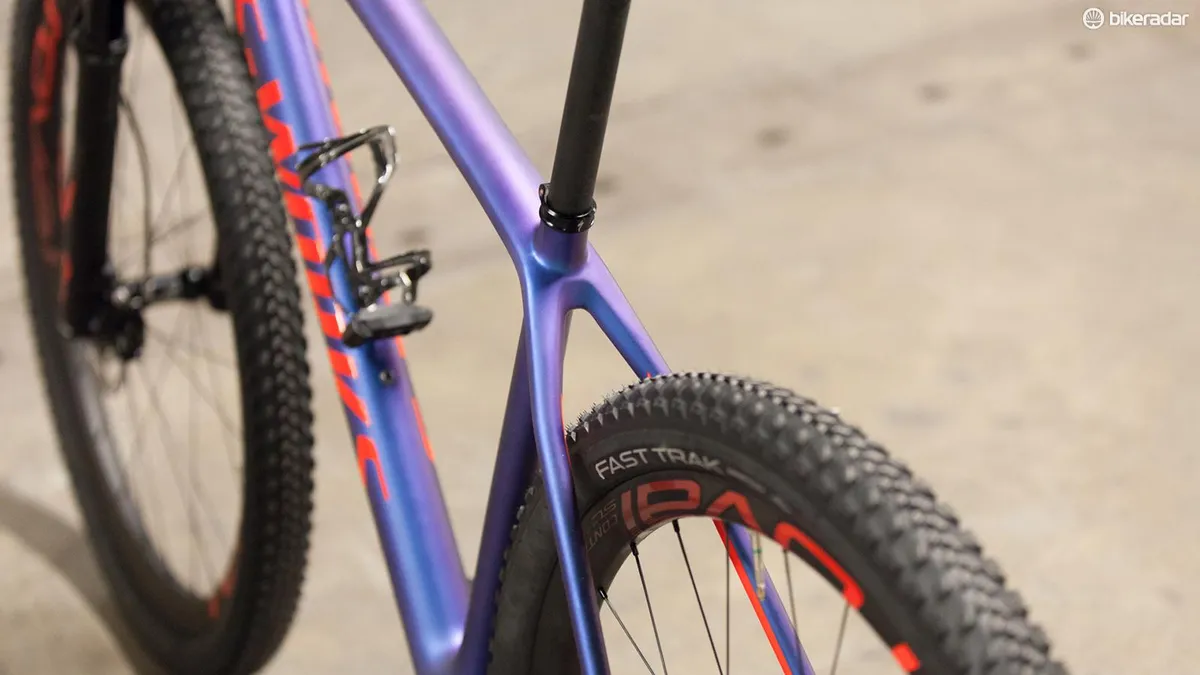
There’s also Boost spacing and wide tyres with a 2.3 on the front and a 2.1 on the back, meaning it’s got all those fashionable things a mountain bike should have in 2018.
Specialized S-Works Epic HT ride impressions
The best hardtail Joe has ridden, priced accordingly
On paper the S-Works Epic looks great, but hype and a top-spec sheet will only get you so far, and hopefully we’re all more interested in how the thing rides.
I’ve ridden plenty of top-spec race hardtails over the last few years and while many have been incredibly light, or comfortable, or super stiff, the Epic does the best job of combining those three characteristics.
It’s plenty light, so you know it’s going to fly up the hills, but that lightness is accompanied by a kind of dull give in the frame, which makes it a touch more comfortable than other superlight hardtails.
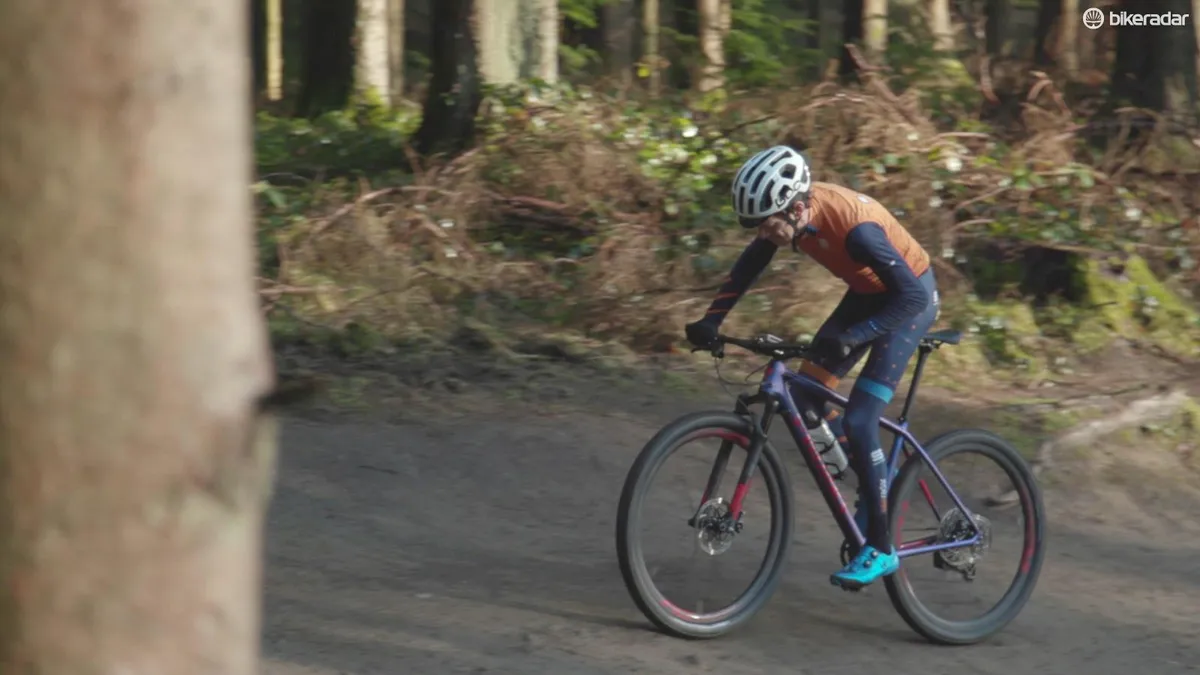
I rode a Merida Big Nine at the Marathon World Championships last year and while that bike was equally light, I’d say the frame had more of a brittle twang to it when hitting the rough stuff, The Specialized feels more like a dull thud, making for a comfier ride.
Another bike that does a great job of combining feathery weight and this kind of dull thud/give is the Cannondale FSI, which coincidentally also came from the mind Peter Denk when he worked at Cannondale. Well, I don’t think it’s a coincidence, but you get the gist.
For a lightweight hardtail this bike totally rips on gnarlier, technical terrain
Comfort is only part of what makes a brilliant race bike, if it doesn’t have a stiff, snappy frame then you’ll be left wanting on race day, and fortunately the Epic has no problems there.
It’s hard not to descend into cliches, but this bike is stiff in all right places, without feeling overly harsh and I didn’t feel any noticeable give when pedalling hard. And, in the fact, recent XC World Cup winner and pedal smashing powerhouse Samuel Gaze regularly rides an Epic HT, which shows this isn’t just a bike for featherweights.
For a lightweight hardtail this bike totally rips on gnarlier, technical terrain. Granted the handling isn’t quite as sharp as XC bikes of old, but you just have to get used to putting a bit more weight through the bars and you’re rewarded with a more stable and fun ride.
The seat tube angle is 74 degrees, which is relatively steep for an XC bike. This means you get a nice pedalling position to get the power down, without feeling too stretched out with the extended reach.
Specialized Brain
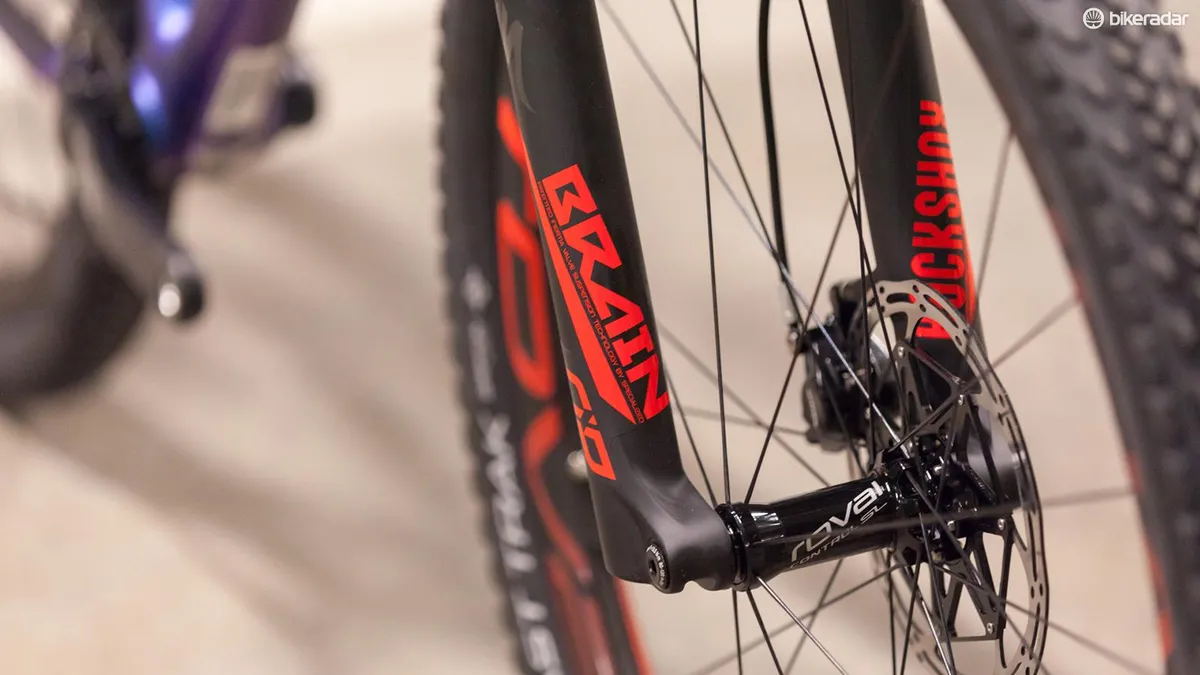
Moving on to the Brain suspension. If you’re unfamiliar with Specialized Brain, it’s basically an automatic opening and closing of the compression circuit of the forks.
This means that on smooth terrain your forks will stay solid and locked out, but when you hit a bump the suspension opens up and you get all the travel available.
The sensitivity on the Brain can also be adjusted, going from fully open all the time to fairly solid, where it needs to have a good knock to open up the compression circuit.
I’ve got on well with the Brain and it definitely doesn’t seem to slow down Specialized’s World Cup riders
Brain forks of old had this adjustment at the bottom of the forks, which meant that once you were riding you had to stop to change the sensitivity, but now it’s on the top/crown meaning you can adjust on the fly.
Although, reaching down to adjust the Brain during an XC race kind of defeats the point of an automatic lockout. That being said, in a marathon race where you might have an hour climb followed by a long descent, I can definitely see the point.
The trade off with the Brain is that you get a slight clunk/knock when the fork opens up. It almost feels like a milder version of bottoming out a tyre, which some riders may find distracting.
However, I’ve got on well with the Brain and it definitely doesn’t seem to slow down Specialized’s World Cup riders. If you are considering this bike and are sitting on the fence regarding the Brain, I’d recommend trying one out before you buy.
Specialized S-Works Epic HT cons
The Epic is an impressive bike, but it’s by no means perfect and there are a few things I was not as impressed with.
First up is the saddle.
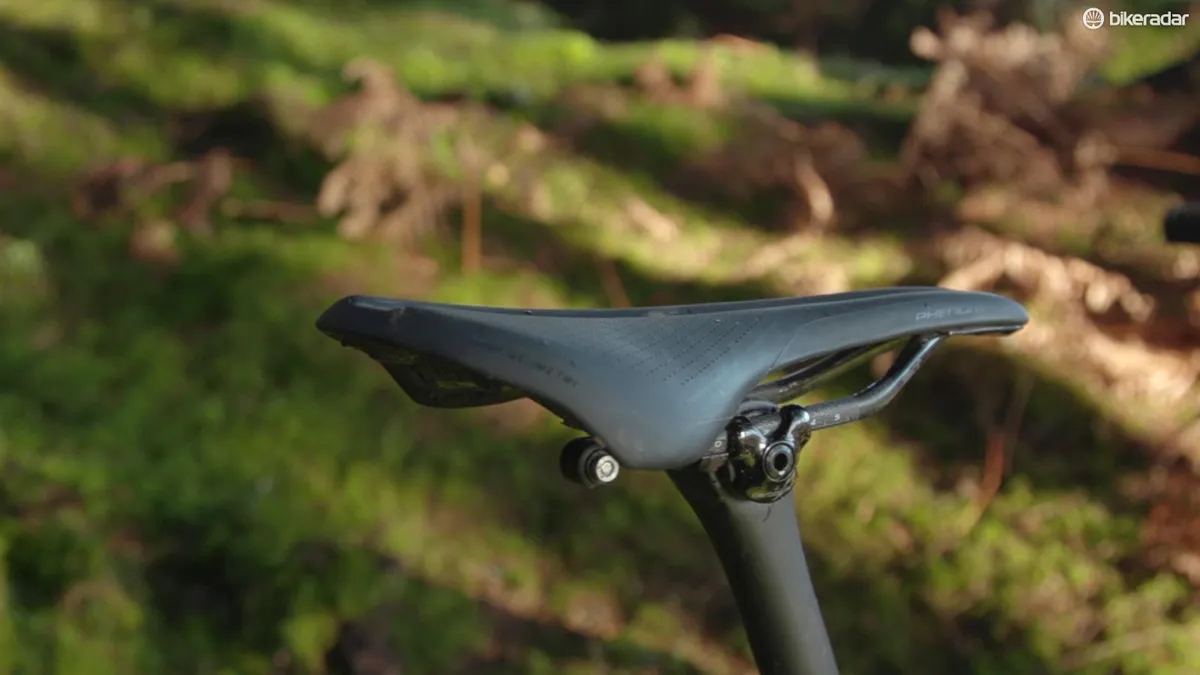
Saddles are very much a personal preference, but my bum and I have not had a good time with this one. The padding and base are incredibly firm, so I’ve found it pretty uncomfortable and unforgiving when tearing through the singletrack, meaning my undercarriage receives a bit of a battering. I’d much prefer to see something with a bit more give in the base, which would hopefully take some of the sting out of the saddle.
I’ve only had this bike for a couple of months and I’m pretty good at keeping it clean and well maintained, however some of the stickers have already started to peel off.
The sizing sticker on the seat tube is gone and the Roval logos on the wheels are starting to go as well. For such a pricey bike this isn’t great, but I suspect any Specialized dealer would be more than happy to sort you out with some free replacements.
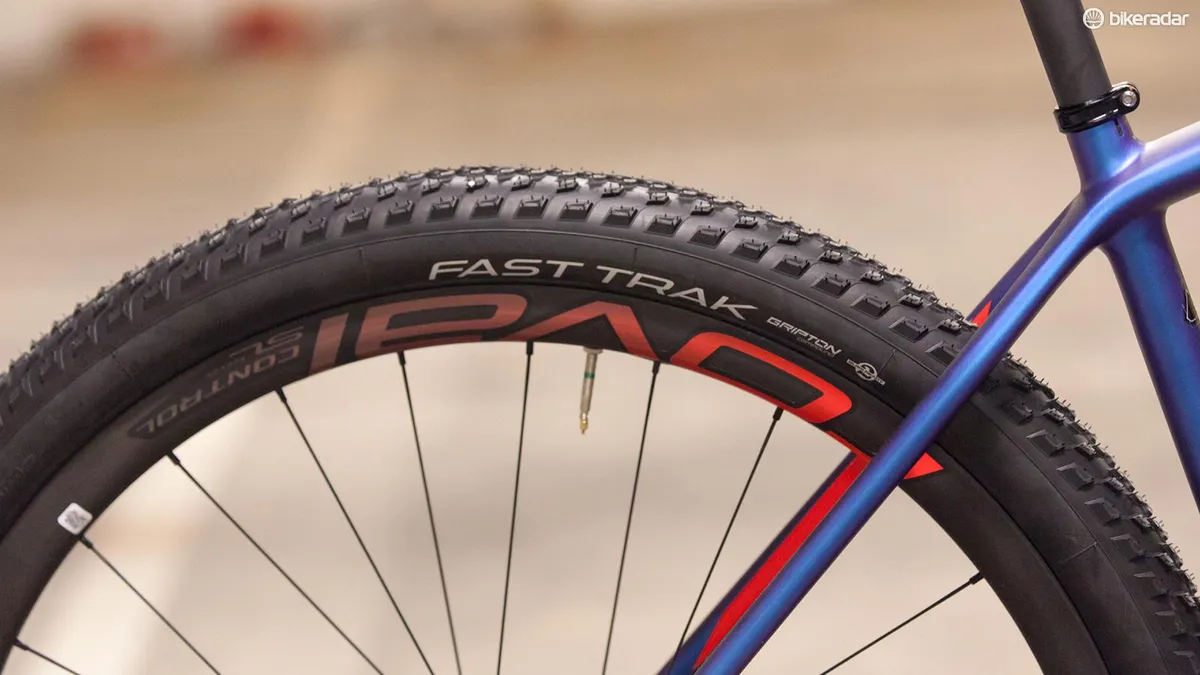
It’s a small gripe, but in the UK and other countries where we get this thing called mud, I’d love to see sintered instead of the organic pads that come with the bike. Organic are nice, but there are certain parts of the UK where they’ll last about 20 minutes before being ground to dust, so I think sintered would be a better option.
Tyres are very much personal preference too, but it would have been great to see something with a bit more shoulder bite. Specialized has plenty of decent tyres so this wouldn’t be a problem to spec. Although, I guess, if you live somewhere with lots of sun this won’t be as much of a problem.
Finally, the price. Being Specialized and being the top-spec hardtail, this bike doesn’t come cheap at £7,500 / $8,000 / AU$10,000, especially when you consider a direct sales brand can offer a bike with similar spec for £2,000 less.
However, this frame really is a stunner, both in terms of its performance and pure superbike look, which you’d expect from a bike that costs so much. Is it worth it? That’s up to you.
Specialized S-Works Epic HT overall
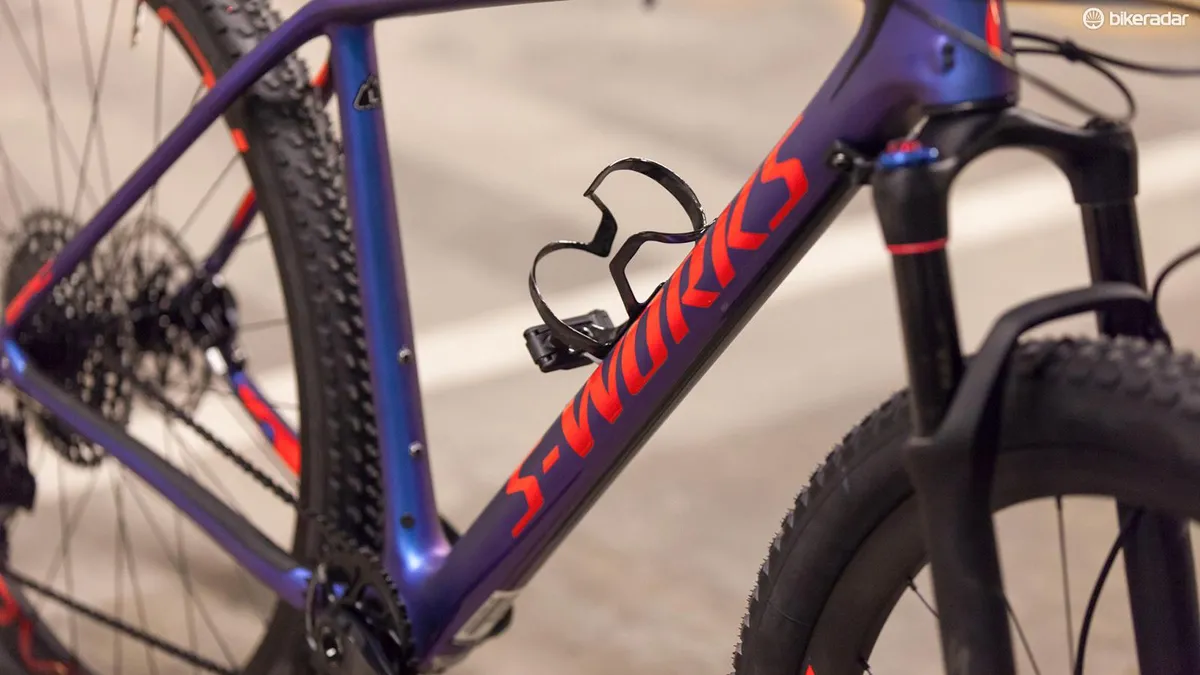
So, there you have it, Specialized has made perhaps the best hardtail I’ve ever ridden. It’s not cheap, but this bike totally rips, and if you’re lucky enough to get your hands on one you’ll have absolutely no excuses come race day.
I’m going to be riding and racing this bike throughout 2018 so keep an eye out on BikeRadar to see how I get on.
